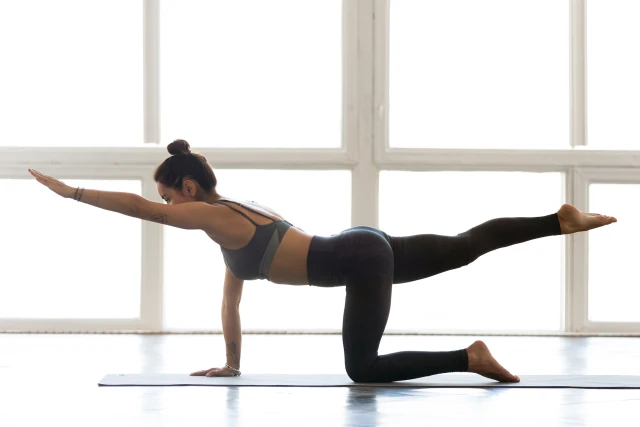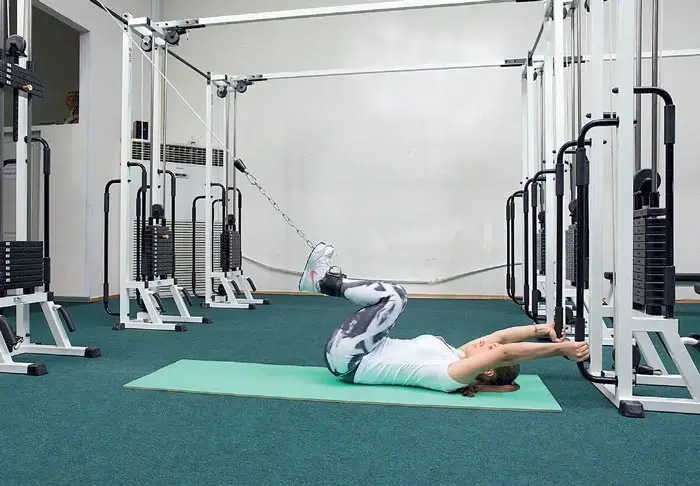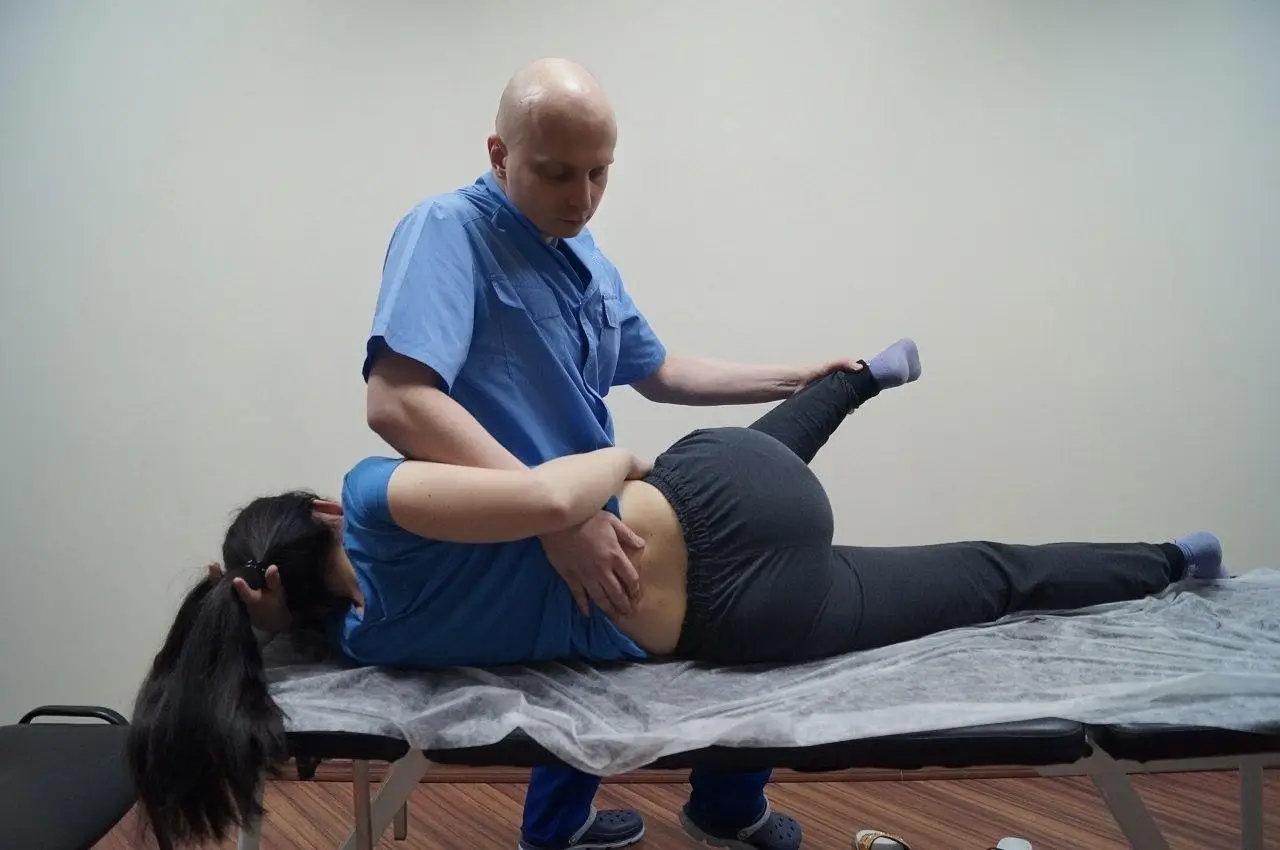

Individual Kinesiotherapy
 In modern medicine, increasing attention is paid to treatment methods that activate the body's own resources for health recovery. One such effective approach is kinesiotherapy – a method that allows not only to eliminate symptoms but also to address the cause of disease through movement.
In modern medicine, increasing attention is paid to treatment methods that activate the body's own resources for health recovery. One such effective approach is kinesiotherapy – a method that allows not only to eliminate symptoms but also to address the cause of disease through movement.
Kinesiotherapy is a therapeutic method based on the use of dosed physical exercises and movements for restoring, maintaining, and developing functions of the musculoskeletal system. The term derives from the Greek words "kinesis" (movement) and "therapia" (treatment).
Basic Principles of the Method
- The fundamental principles of kinesiotherapy include:
- Individual approach to each patient considering diagnosis specifics, age, and physical condition
- Gradual increase in load for safe function recovery
- Comprehensive impact on all body systems through movement
- Active patient participation in the treatment process
Clinical experience shows that a properly selected movement program helps patients not only get rid of pain but also prevent disease recurrence.
Types and Methods of Kinesiotherapy
 Active and Passive Kinesiotherapy
Active and Passive Kinesiotherapy
Active kinesiotherapy involves independent exercise performance by the patient under specialist supervision. This method is most effective for chronic back and joint pain, posture disorders, and post-trauma recovery during rehabilitation stage.
Passive kinesiotherapy includes movements performed by a specialist without active patient participation. Applied in acute conditions with pronounced pain syndrome, neurological disorders with limited voluntary movements.
- Specialized methods include:
- Isometric exercises – static muscle tensions without joint movement
- Isotonic exercises – dynamic movements with muscle length changes
- Isokinetic exercises – movements with constant speed under variable resistance
- Functional kinesiotherapy – exercises mimicking patient's daily movements
Individual Kinesiotherapy
Individual kinesiotherapy represents the gold standard of treatment when an exercise program is developed specifically for a particular patient. Unlike group sessions, this approach allows considering all diagnosis specifics and comorbidities, adapting load to current physical condition, and ensuring maximum exercise safety.
Therapeutic Kinesiotherapy Exercises
Effective therapeutic kinesiotherapy exercises should be selected considering biomechanical disorder characteristics. Clinical practice uses the following exercise groups:
- Mobility development exercises:
- Joint mobilization techniques
- Stretching of shortened muscle groups
- Movement coordination exercises
- Strength exercises:
- Deep stabilizing muscle strengthening
- Work with large muscle groups
- Functional movements with resistance
Kinesiotherapy for Back
Back kinesiotherapy is one of the most demanded areas in rehabilitation medicine. Back pain affects up to 80% of the adult population, and a properly selected movement program often becomes the only effective solution.
- Successful spinal kinesiotherapy is based on understanding biomechanical disorders:
- Spinal stabilization through deep stabilizing muscle strengthening
- Mobilization of rigid spinal segments to restore normal mobility
- Correction of muscle imbalance between shortened and weakened muscle groups
Kinesiotherapy for Neck and Shoulder
Neck and shoulder kinesiotherapy requires special attention to anatomical-functional connections between these structures. The cervical-shoulder region represents a unified biomechanical complex where disorders are interconnected.
- In clinical practice, cervical-shoulder region treatment includes:
- Restoration of proper scapular biomechanics – the foundation of stable shoulder girdle function
- Head position correction to reduce cervical vertebrae load
- Improvement of cervico-thoracic junction mobility – a key zone for entire region function
Kinesiotherapy for Posture Correction
Posture correction kinesiotherapy represents a comprehensive approach to solving problems related to improper body position in space. Posture disorders not only affect appearance but can also lead to serious functional disorders.
- Effective posture correction requires a systemic approach:
- Elimination of disorder causes – workplace correction, proper movement skill training
- Gradual restoration – from mobilizing restricted structures to strengthening weakened muscles
- Formation of new movement patterns through repeated correct movement practice
- Daily life integration – teaching proper posture maintenance in various situations
Indications and Contraindications
Kinesiotherapy is effective for a wide spectrum of musculoskeletal disorders, including osteochondrosis of all spinal segments, intervertebral hernias in remission stage, joint arthrosis and arthritis, myofascial pain syndromes, posture disorders, and scoliosis.
Contraindications:
- Acute infectious diseases with fever
- Malignant neoplasms (before oncologist consultation)
- Acute psychiatric disorders
- Severe cardiovascular diseases in decompensation stage
- Pronounced pain syndrome in acute phase
Clinical Experience
Specialists note high kinesiotherapy effectiveness due to its comprehensive body impact and individual program selection possibilities. Clinical observations show positive dynamics in 85-90% of patients with regular sessions and recommendation compliance. The method is particularly effective for chronic back pain, posture disorders, post-trauma recovery, and musculoskeletal disease recurrence prevention.
Kinesiotherapy represents an effective, safe, and scientifically proven treatment method for a wide spectrum of musculoskeletal disorders. The individual approach based on understanding biomechanical disorders and functional characteristics of each patient allows achieving pronounced and stable results.
☛ The Wim Hof Method – breathing exercises and cold exposure.
☛ Kinesiological testing in applied kinesiology.




